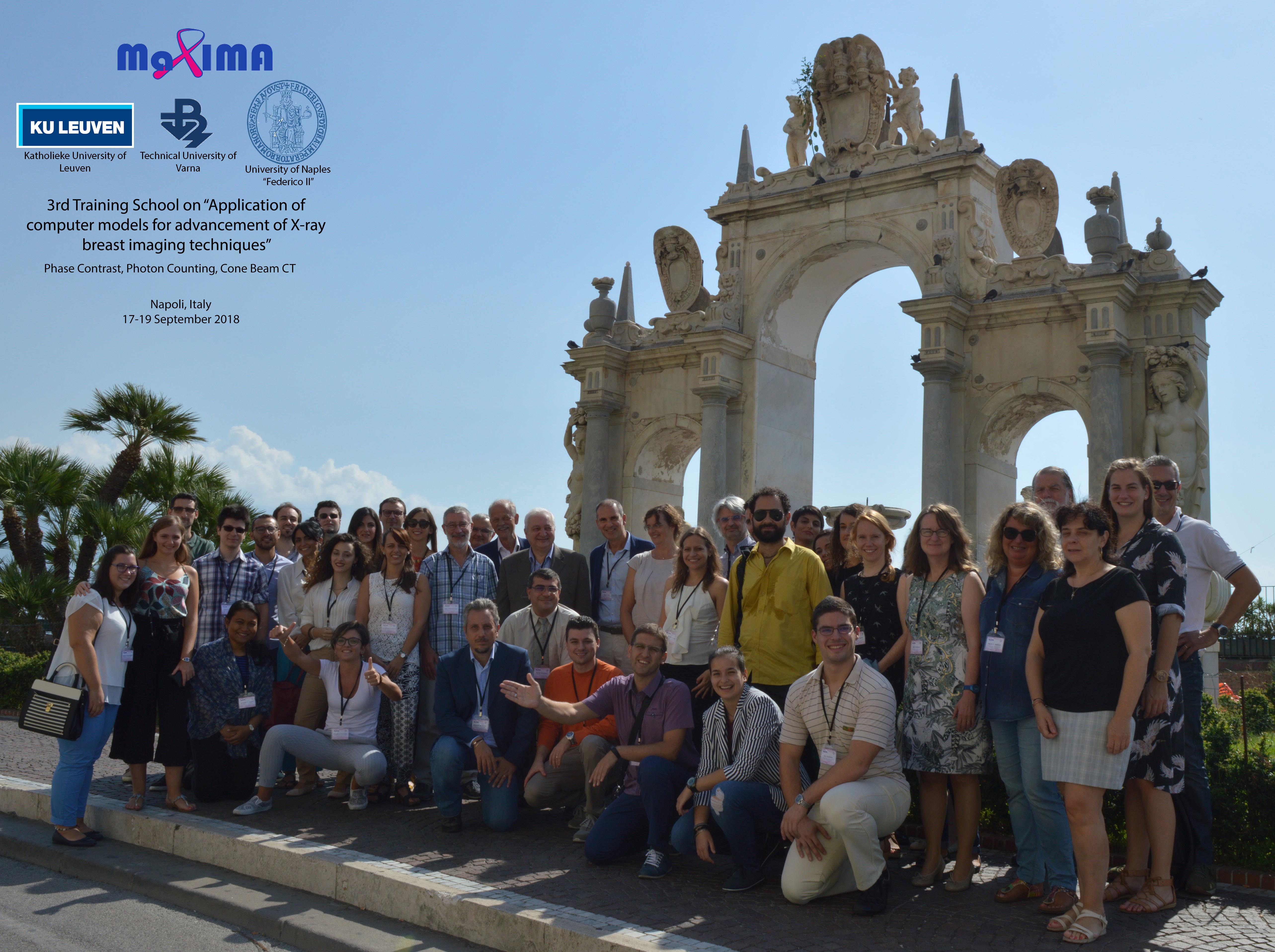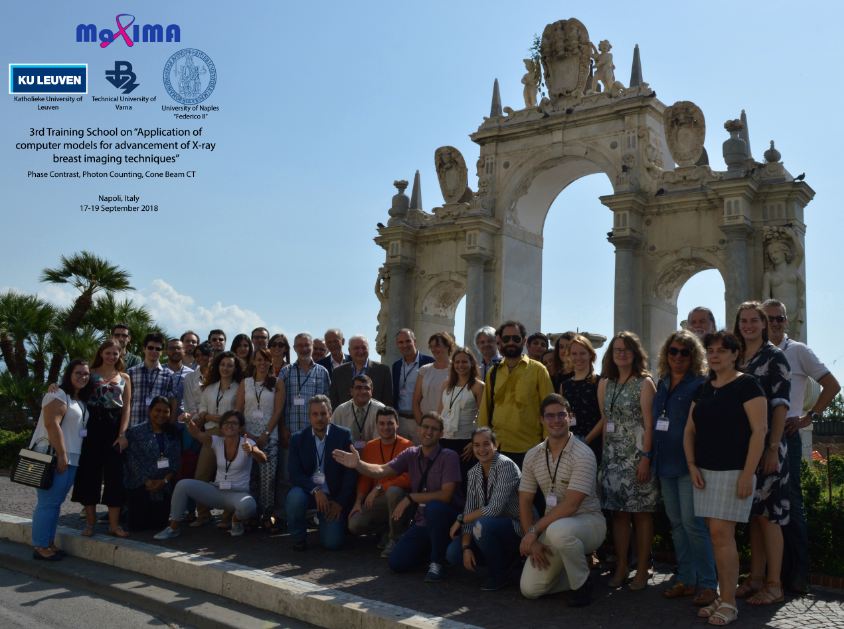 |
The Australian Synchrotron, is a world-class national research facility that uses accelerator technology to produce a powerful source of light – x-rays and infrared radiation – a million times brighter than the sun. The facility has ten different experimental stations, or beamlines, which harness that light so researchers can see the fundamental structure and composition of materials, on scales ranging from the atomic to the macroscopic – with a level of detail, speed and accuracy not possible in conventional laboratories. The Australian Synchrotron supports a broad range of high quality research, with applications in sectors from medicine and nanotechnology to manufacturing and mineral exploration. |
 |
The European Synchrotron Radiation Facility (ESRF), is the most intense source of synchrotron-generated light, producing X-rays 100 billion times brighter than the X-rays used in hospitals. These X-rays, endowed with exceptional properties, are produced at the ESRF by the high energy electrons that race around the storage ring, a circular tunnel measuring 844 metres in circumference. |
 |
Elettra Sincrotrone Trieste, is a multidisciplinary international research center of excellence, specialized in generating high quality synchrotron and free-electron laser light and applying it in materials and life sciences. Its mission is to promote cultural, social and economic growth through:
|
|
ADDRESS Università degli Studi di Napoli Federico II - Dipartimento di Fisica "Ettore Pancini" Complesso Universitario di Monte Sant'Angelo Via Cinthia, 21 - Edificio 6 - 80126 - Napoli - ITALIA Lab - 1H22a0 |
|
PHONE NUMBER +39 081 676339 |
The MaXIMA project (2016-2018), funded by European programme HORIZON 2020, has the objective to increase the research and innovation capacity in the field of computational modelling of breast tumours and their use in studies of advanced X-ray breast imaging techniques such as breast tomosynthesis and phase contrast imaging. MaXIMA partners are: Technical University of Varna (Bulgaria), Katholieke University of Leuven (Belgium), University of Naples “Federico II” (Italy).
The medical physics group at the Department of Physics “Ettore Pancini” of University of Naples “Federico II”, partner of this project, has organized the 3rd Training School entitled “Application of computer models for advancement of X-ray breast imaging techniques”.
The Training School took place in Naples, at Grand Hotel Santa Lucia, from 17 to 19 September 2018. The programme of the School included lectures from international experts on the following topics related to X-ray breast imaging: phase contrast imaging, photon counting detectors and cone beam Computed Tomography.
You can download the slides (.pdf) and the video recording (.mp4) of the lessons.
17th September
- 09:00 - 09:15 | Opening of the 3rdMAXIMA Training school - Welcome address | SLIDE | VIDEO
- 09:30 -11:00 | The evolution of edge-illumination X-ray phase contrast imaging and its prospective clinical translation to breast-related applications | Prof.Alessandro Olivo – University College London, UK | SLIDE
- 11:30 -13:00 | Phase contrast breast computed tomography with synchrotron radiation | Prof. Renata Longo – Dipartimento di Fisica & INFN Trieste, Università di Trieste, Italy | SLIDE | VIDEO
- 14:00 -15:30 | Phase contrast mammography with synchrotron radiation | Dr.Alberto Bravin – Biomedical Beamline ID17, European Synchrotron Radiation Facility, Grenoble, France | SLIDE | VIDEO
- 16:00–16:45 | Implementation of interference effects in coherent X-ray scattering in Geant4 | Dr.Gianfranco Paternò – INFN Ferrara, Italy | SLIDE | VIDEO
- 17:00 –17:45 | The development of a framework for virtual clinical trials in grating-based phase-contrast X-ray imaging and first applications | Dr. Janne Vignero,KU Leuven, Belgium | SLIDE | VIDEO (48:23 min)
18th September
- 09:00 -10:30 | Cone-beam breast computed tomography | Prof.John M. Boone – UC Davis Medical Center, Sacramento, CA, USA | SLIDE | VIDEO
- 11:00 -12:30 | Spiral breast computed tomography with photon counting detectors | Prof.Willi A. Kalender–Institute of Medical Physics, Friedrich-Alexander-University, Erlangen Germany | SLIDE | VIDEO
- 14:00 -15:30 | Development of breast tumours models database | Prof. Kristina Bliznakova - Technical University of Varna, Bulgaria | SLIDE | VIDEO
- 16:00–17:30 | Databases for mammography | Prof. Evelina Fantacci – Dipartimento di Fisica, Università di Pisa, Pisa, Italy | SLIDE | VIDEO
19th September
- 09:00 -10:30 | Phantoms for X-ray breast imaging | Prof.Alessandra Tomal - University of Campinas, Institutode Fisica"GlebWataghin", Campinas, Brazil | SLIDE | VIDEO
- 11:00 -12:30 | Breast Model Validation for Monte Carlo Evaluation of Normalized Glandular Dose Coefficients in Mammography | Dr. Antonio Sarno - Dipartimento di fisica & INFN Napoli, Università di Napoli Federico II, Naples, Italy | SLIDE;
3D dose distribution in two clinical digital breast tomosynthesis units: a phantom study | Dr. Antonio Sarno - Dipartimento di fisica & INFN Napoli, Università di Napoli Federico II, Naples, Italy | SLIDE | VIDEO (02:47 min);
Dosimetry in breast computed tomography | Prof. Paolo Russo - Dipartimento di fisica & INFN Napoli, Università di Napoli Federico II, Naples, Italy | SLIDE | VIDEO (34:05 min);
Suitability of low density materials for 3D printing of physical breast phantoms | Prof. Zhivko Bliznakov - Technical University of Varna, Bulgaria | SLIDE | VIDEO (1 h 4 min).
MCMA slide of the talks
International Conference on Monte Carlo Techniques for Medical Applications (MCMA2017)
15-18 October 2017, Napoli, Italy
(You can download the pdf files with the slide of the talks by clicking on the title)
Monday 16 October 2017 - Aula Magna
08.30 - Alberto Del Guerra (University of Pisa & INFN, Italy) - The dawn of PET Monte Carlo: a personal experience
09.00 - Willi A. Kalender (University of Erlangen-Nuernberg, Germany) - Monte Carlo methods for diagnostic radiology
I. Session: Update on MC code/physics
9.15 - Frédéric Tessier (NRCC, Ottawa, Canada) - EGSnrc update: new features and legacy code upgrade
9.45 - Ernesto Mainegra-Hing (NRCC, Ottawa, Canada) - Consistency of the atomic relaxation algorithm and new photo-electric
10.00 - Reid Townson (NRCC, Ottawa, Canada) - Radionuclide decay scheme modelling in EGSnrc
10.15 - David Rogers (Carleton University, Canada) - Improved kerma calculations with EGSnrc
II. Session: Update on MC code/physics
11.30 - Pablo Cirrone (INFN-LNS,Italy) - Rewiev of Geant4 application in radiation therapy
12.00 - Susanna Guatelli (University of Wollongong, Australia) - Validation of Geant4 Fragmentation for Heavy Ion Therapy
12.30 - Pedro Arce (CIEMAT, Spain) - Status and latest developments of GAMOS/GEANT4 framework
12.45 - Xiaoya Wang (McGill University, Canada) - Assessment of RBED electron-impact ionization cross sections for Monte Carlo electron transport
13.00 - Rowan Thomson (Carleton University, Canada) - Quantum versus classical Monte Carlo simulation of low energy electron transport in condensed media
III. Session: Update on MC code/physics
14.15 - Francesc Salvat (Universitat de Barcelona, Spain) - Modeling of inelastic collisions of charged particles in condensed matter
14.45 - Gianfranco Paternò (University of Ferrara, Italy) - Geant4 implementation of inter-atomic interference effect in Small-Angle Coherent X-ray Scattering for materials of medical interest
15.00 - Salvador García-Pereja (Hospital Regional Universitario de Málaga, Spain) - Ant colony algorithm for driving variance reduction techniques in Monte Carlo simulations
15.15 - Felix Horst (THM University of Applied Sciences & GSI Helmholtz Centre for Heavy Ion Research, Germany) - Novel data relevant for helium ion therapy and their comparison with FLUKA nuclear reaction models
IV. Session: MC in brachytherapy
16.30 - Luc Beaulieu (Université Laval, Québec, Canada) - Monte Carlo dose calculations in brachytherapy
17.00 - Rowan Thomson (Carleton University, Canada) - Brachytherapy source and applicator models for diverse Monte Carlo simulations with egs_brachy
17.30 - Gabriel Famulari (McGill University, Canada) - Consequences of patient heterogeneities for intermediate-energy sources in post-implant assessment of prostate brachytherapy treatment plans
17.45 - Konstantinos A. Mountris (LaTIM INSERM, France) - ORACLE: A DVH-based inverse planning system for LDR prostate brachytherapy using MC dosimetry
18.00 - Marc-André Renaud (McGill University, Montreal, Canada) - MC dose calculation and treatment planning for intensity modulated brachytherapy
Monday 16 October 2017 - Aula A
III. Session: Parallel MC implementations
14.15 - Angelo Schiavi (University of Rome, Italy) - Fred: A new GPU-based fast-MC code and its application in proton beam therapy
14.30 - Daniel Maneval (Universitè Laval, Canada) - Efficiency improvement in proton dose calculations with an equivalent restricted stopping power formalism
14.45 - Julien Bert (LaTIM-INSERM, France) - Improved Woodcock tracking on Monte Carlo simulations for medical applications
15.00 - Xun Jia (University of Texas Southwestern Medical Center, USA) - Recent updates in GPU-based Monte Carlo simulation for radiation therapyIV.
IV. Session: Parallel MC implementations
16.30 - Silvia Muraro (INFN Pisa, Italy) - MC codes and Range Monitoring in Particle Therapy: the case of secondary charged particles
16.45 - Brad Oborn (Illawarra Cancer Care Centre, Australia) - Monte Carlo modelling and experimental verification of a high resolution silicon diode array performance in proton beams and magnetic fields
17.00 - Francesco Fracchiolla (APSS Trento, Italy) - Application of a Monte Carlo algorithm in dosimetric verification of pencil beam scanning proton therapy treatments
17.15 - Pietro Pisciotta (University of Catania, Italy) - Monte Carlo dosimetric study for preclinical small animal hadrontherapy using Geant4 toolkit
17.30 - Carla Winterhalter (PSI, Switzerland) - Comparison of two Monte Carlo calculation engines for proton pencil beam scanning
18.00 - Andrea Mairani (Centro Nazionale di Adroterapia Oncologica, Italy) - Monte Carlo-based RBE investigations in hadrontherapy
Tuesday 17 October 2017 - Aula Magna
I. Session: MC applications in imaging and nuclear medicine
8.30 - Joao Seco (German Cancer Research Center (DKFZ) & University of Heidelberg, Heidelberg, Germany) - Monte Carlo study of Helium CT (HeCT) imaging
9.00 - George Dedes (LMU Munich, Germany) - Fluence modulated proton computed tomography
9.15 - Natalia Roberts (University of Wollongong, Australia) - Modelling of a novel x-ray source for MR-guided radiotherapy
9.30 - Elisa Fiorina (University of Torino, Italy) -Monte Carlo simulation tool for online treatment monitoring in hadrontherapy with in-beam PET
9.45 - Antonio Sarno (University of Naples Federico II, Italy) - Breast Model Validation for Monte Carlo Evaluation of Normalized Glandular Dose Coefficients in Mammography
II. Session: MC models for radiation sources and beams
11.00 - Jan Seuntjens (McGill University, Canada) - A Monte Carlo perspective on small beam radiation therapy
11.30 - Charlie Ma (Fox Chase Cencer Center, USA) - Investigation of Conformal Arc therapy utilizing Cobalt 60 beams
11.45 - Caterina Cuccagna (TERA Foundation/University of Geneva, Switzerland) - Beam characterization for the TULIP accelerator for protontherapy through Full Monte Carlo simulations
12.00 - Pietro Pisciotta (University of Catania, Italy) - Characterization of an X-ray source based on laser-target interaction using the Geant4 Monte Carlo toolkit
12.15 - Timo Ikonen (Varian Medical Sysems) - Monte Carlo modeling of Varian TrueBeam photon beams with Geant4-based VirtuaLinac and comparison to experiments
12.30 - Giuliana Milluzzo (LNS-INFN, Italy) - Geant4-based Monte Carlo simulations of a transport beam line for multidisciplinary applications of laser-driven proton beams
12.45 - Tony Price (University of Birmingham, UK) - Code sharing of MC beam models for advanced radiotherapy
III. Session: MC in radiobiology
14.15 - Carmen Villagrasa (Institut de radioprotection et de sûreté nucléaire, France) - Simulation of early radio-induced DNA damages using Geant4-DNA
14.45 - Konstantinos Chatzipapas (University of Patras, Greece) - Validating Geant4-DNA for Double Strand Brakes (DSB): A preliminary study
15.00 - Francesca Ballarini (University of Pavia & INFN Pavia, Italy) - The BIANCA biophysical model/MC code: calculations of radiation-induced cell damage in view of hadrontherapy treatments
15.15 - Stewart Mein (DKFZ, Germany) - Monte Carlo calculation of RBE and in-vitro validation for helium
IV. Session: MC for treatment planning and evaluation
16.30 - Tony Popescu (University of British Columbia, Canada) - Modern clinical applications of Monte Carlo simulations for in-vivo patient-specific QA
17.00 - Joanna Cygler (The Ottawa Hospital, Canada) - Experimental verification of 4D Monte Carlo calculations of dose delivered to a deforming anatomy
17.15 - Hiroaki Kumada (University of Tsukuba, Japan) - Verification of dose estimation for Monte-Carlo based treatment planning system for boron neutron capture therapy
17.30 - Fredrik Tamm (RaySearch Laboratories AB, Sweden) - Proton MC in Raystation
17.45 - Alessia Embiaco (University of Pavia, Italy) - FLUKA validation of MONET code for dose calculation in Hadrontherapy
18.00 - David Rogers (Carleton University, Canada) - Fun with Monte Carlo: or how I keep learning radiation physics
Tuesday 17 October 2017 - Aula A
I. Session: MC applications in IGRT and dosimetry
8.45 - Roumiana Chakarova (Sahlgrenska University Hospital, Sweden) - An automated Monte Carlo QA system for volumetric modulated arc therapy: possibilities and challenges
9.00 - Simon Kirchhof (DKFZ, Germany) - Monte-Carlo based CT Simulation of Virtual Patient Geometries
9.15 - Salvatore Berenato (Cardiff University, UK) - Advanced personalised 3D dosimetry based on Monte Carlo simulation for Peptide Receptor Radionuclide Therapy
9.30 - Bas Raaymakers (University Medical Center Utrecht, Netherlands) - The promise of the MRI linac: simultaneous MRI and irradiation
II. Session: MC applications in micro-dosimetry
11.15 - Gabriel Famulari (McGill University, Canada) - Microdosimetry calculations for monoenergetic electrons using Geant4-DNA combined with a weighted track sampling algorithm
11.30 - Martin Martinov (Carleton University, Canada) - Heterogeneous multiscale simulations of radiation therapy with gold nanoparticles
11.45 - Yunzhi Ma (CHU de Quèbec & Universitè Laval, Canada) - OpenDNA: An OpenCL-based GPU Monte Carlo simulation code for Microdosimetry
12.00 - Nicole Ackerman (Agnes Scott College, USA) - Geant4 Modeling of Targeted Radionuclide Therapy for Brain Metastasis
12.30 - Floriane Poignant (IPNL, France) - Biophysical modelisation of gold nanoparticles radiosensitizing effects
III. Session: MC applications in IGRT and dosimetry
14.00 - David Shipley (National Physical Laboratory, UK) - Monte Carlo calculated correction factors for a proton calorimeter in clinical proton beams
14.15 - Gregory Delpon (ICO, Centre René Gauduc Heau, France) - Monte Carlo calculation of absorbed doses due to imaging sessions delivered to patients during Tomotherapy Image-Guided RadioTherapy Courses
14.30 - Victor Malkov (Carleton University, Canada) - Impact of the true sensitive volume on ion chamber response in magnetic fields
14.45 - Elisa Jiménez-Ortega (University of Seville & IBIS, Spain) - A robust Monte Carlo Treatment Planning optimization algorithm for dose painting clinical implementation
15.00 - Hugo Palmans (National Physical Laboratory, UK) - Monte Carlo simulations on improved reference dosimetry
IV. Session: MC applications in imaging and nuclear medicine
16.30 - Guillaume Landry (LMU Munich, Germany) - Investigating the physics of a CBCT projection shading correction based on a prior CT
16.45 - Janne Vignero (KULeuven, Belgium) - Contribution of coherent and incoherent scatter in grating-based phase-contrast imaging
17.00 - Stefan Tessarini (ETH Zürich, Switzerland) - Monte Carlo simulations of x-ray grating interferometry based imaging systems
17.15 - Diyun Shu (Nanjing University of Aeronautics and Astronautics, China) - Evaluation of the clinical translation of an optimized Compton Camera during Boron Neutron Capture Therapy for melanoma patients
17.30 - Younes Jourani (Centre Oscar Lambret Lille, France) - Clinical implementation of a Monte Carlo based QA platform for validation of Tomotherapy and Cyberknife treatment plans
Wednesday 18 October 2017 - Aula Magna
I. Session: MC applications in IGRT and dosimetry
8.30 - Frank Verhaegen (Maastro Clinic, Maastricht, the Netherlands) - The use of imaging information in Monte Carlo simulations
9.00 - Caterina Cuccagna (TERA Foundation/ University of Geneva, Switzerland) - Advances in the FLUKA PET tools
9.30 - John Dooley (Accuray Incorporated, USA) - Monte Carlo for CyberKnife Radiosurgery with the InCise Multileaf Collimator
9.45 - Maxime Chauvin (Centre de Recherches en Cancérologie de Toulouse, France) - OpenDose: a Collaborative Effort to Produce Reference Dosimetric Data with Monte Carlo Simulation Software
10.00 - Susanna Guatelli (University of Wollongong, Australia) - Simulation of Synchrotron-based Microbeam Radiation Therapy using Geant4
II. Session: MC applications in IGRT and dosimetry
11.15 - Giuseppe Battistoni (University of Milan, Italy) - The application of the FLUKA Monte Carlo code in medical physics
11.45 - Alessandra Tomal (Univeridade Estadual de Campinas, Brazil) - Skin Model and its impact on Mean Glandular Dose in Digital Mammography
12.15 - Michela Esposito (University of Lincoln, UK) - Monte Carlo simulations for imaging in proton therapy
12.45 - Antonio Sarno (University of Naples Federico II, Italy) - Monte Carlo Evaluation of Glandular Dose Estimates in X-ray Breast Computed Tomography
13.00 - Arthur Lalonde (Universite de Montreal, Canada) - Accurate extraction of tissues parameters for Monte Carlo simulations using multi-energy CT







